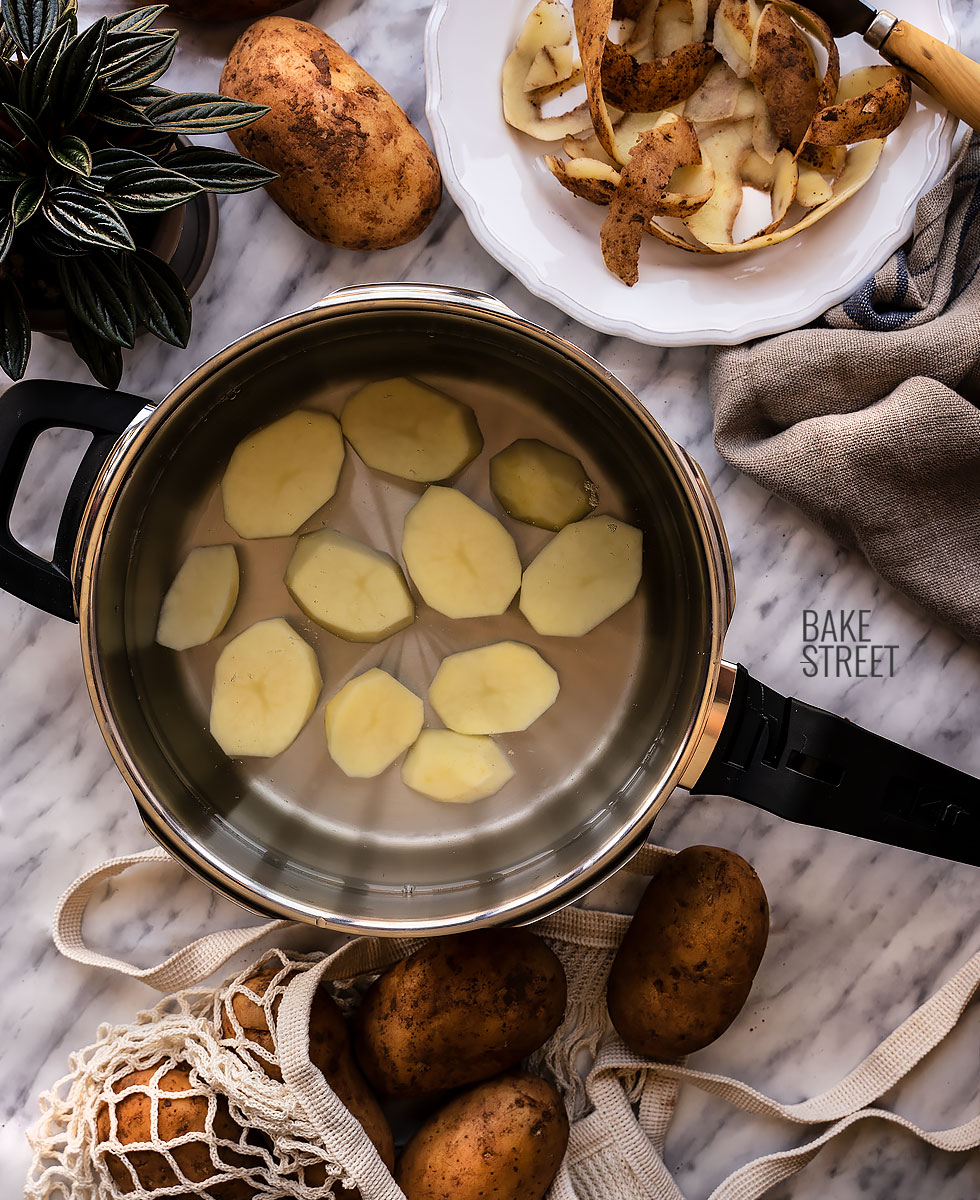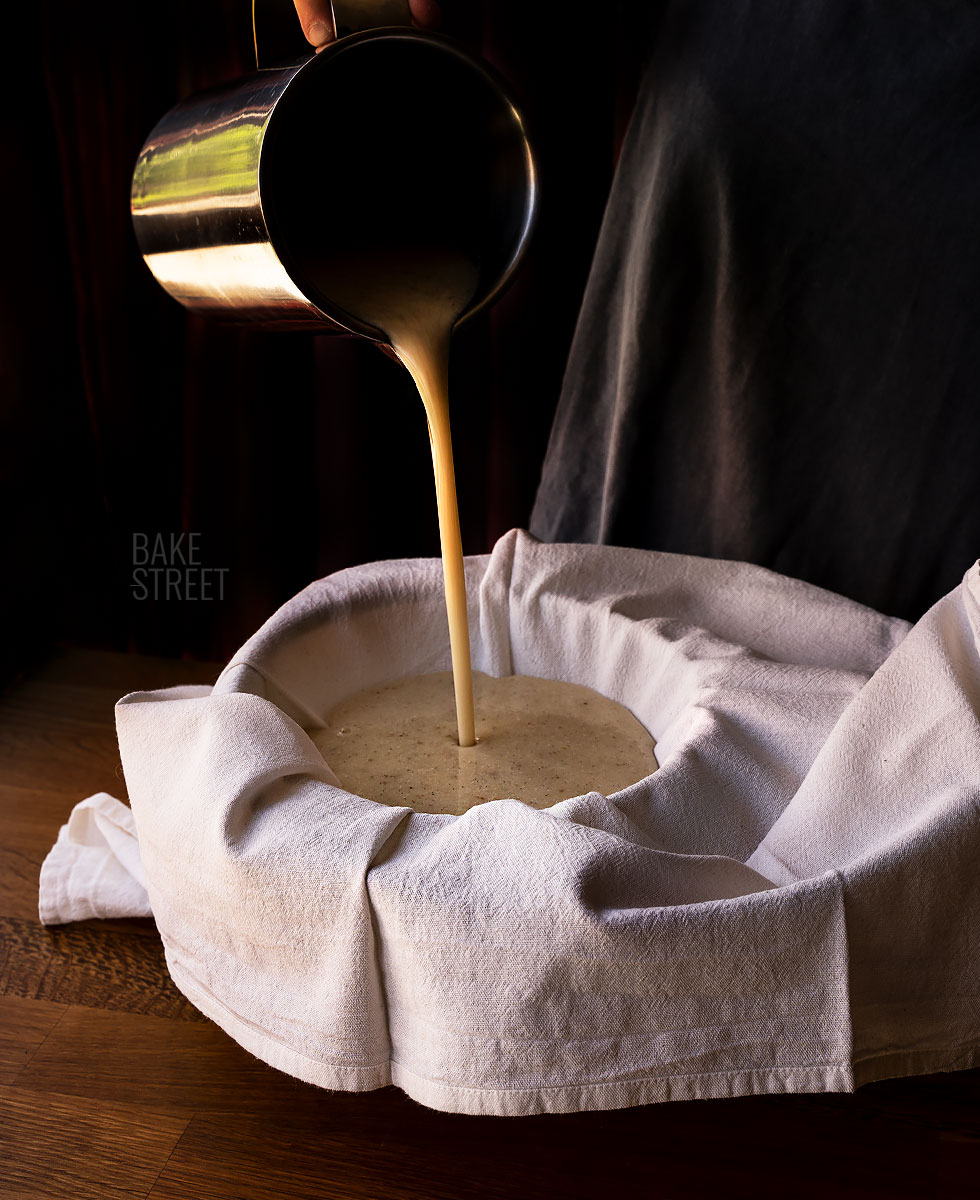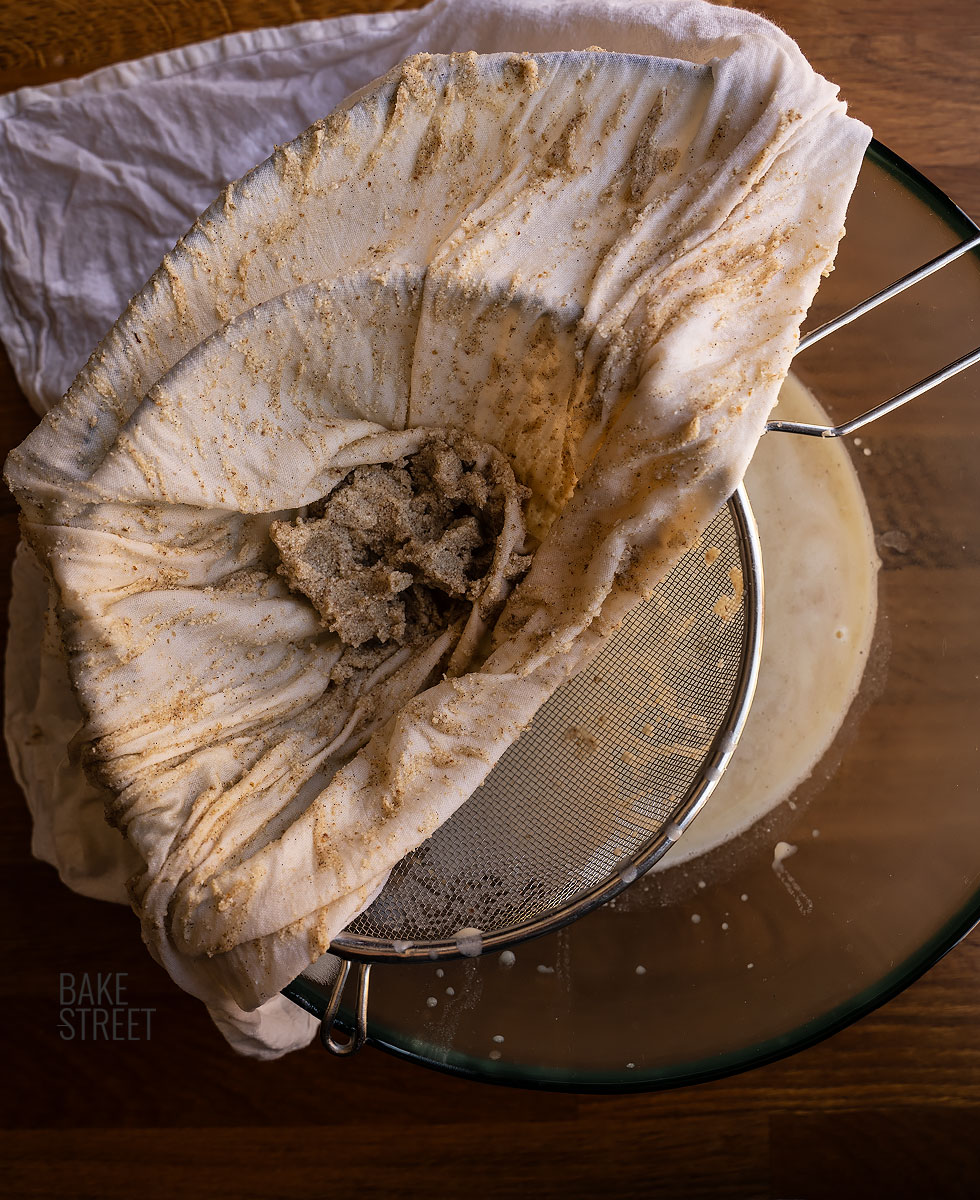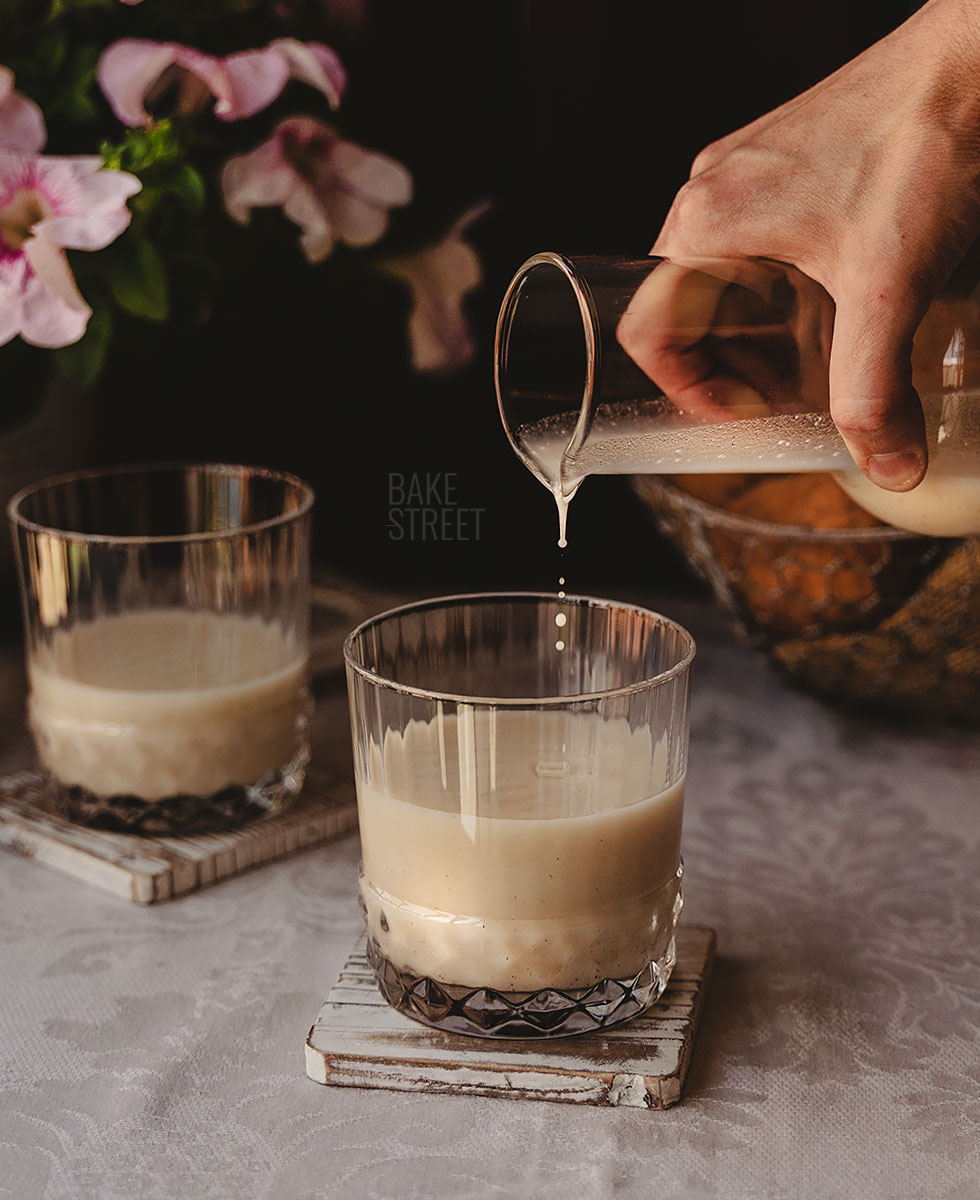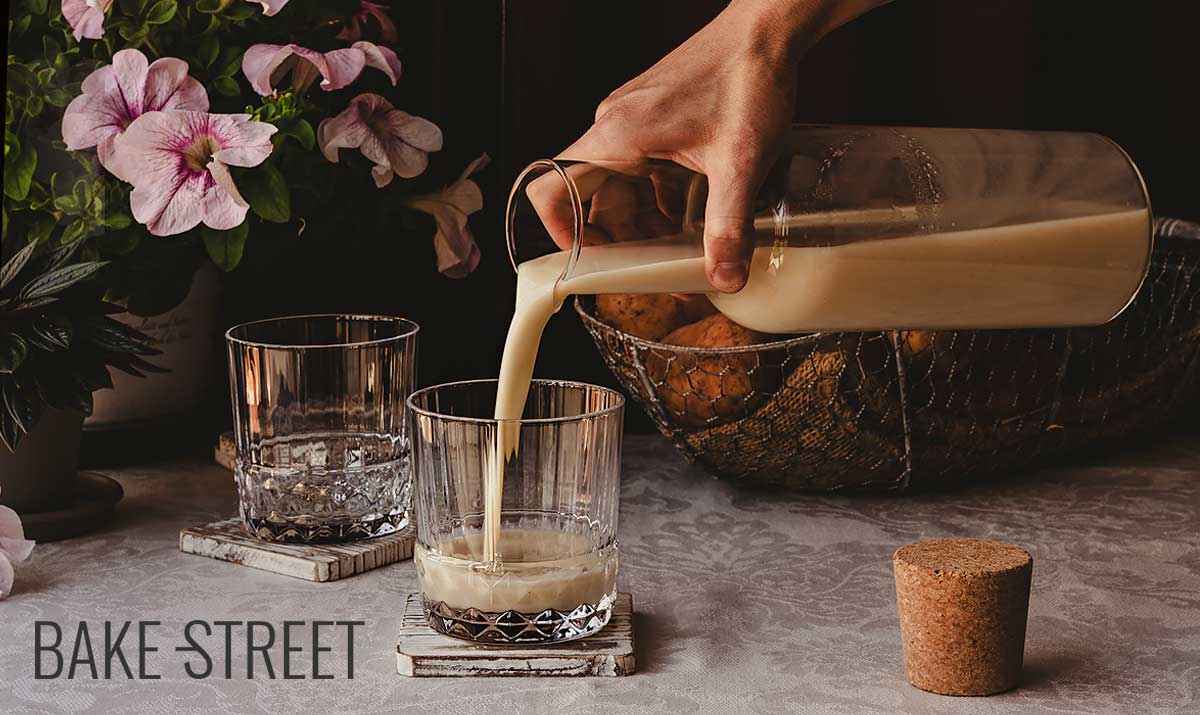
How to make potato milk
How many of you have heard about potato milk? If this is the first time you read about it, it’s possible that it happened to you like it did to me? I was stunned!
My first thought was, Can potato milk be made? What does it taste like? What is its texture like? Can I use it like other milks? There are many questions that may arise, as well as many doubts about whether we are going to like it.
Before continuing, it is true that we call it potato milk, although it would be more correct to refer to it as “potato vegetable drink“.
It is totally normal since the potato is not a naturally sweet ingredient, and we usually associate it with other types of preparations that have nothing to do with a consumption like the one we are proposing today. But, I assure you that by making the right combination, it is a very pleasant milk to consume.
Although we may think that the potato is only used for cooking, it is an ingredient used, due to its high starch content, to make vodka thanks to a fermentation process.
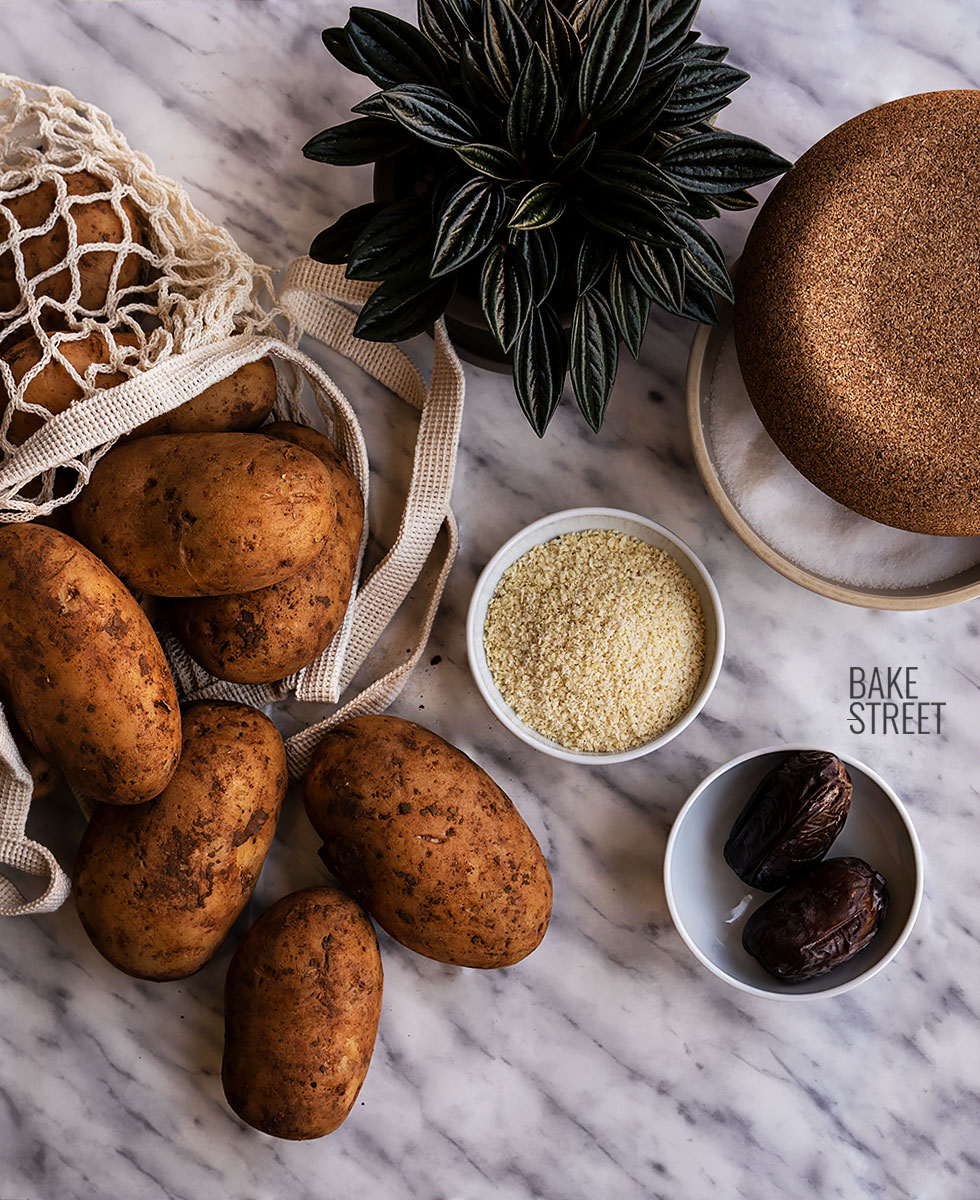
What is potato milk?
Potato milk is a vegetable milk or vegetable drink made from potatoes. Its texture and consistency is milky, starchy, and mild, almost tasteless.
The creation of this new variety of vegetable “milk” is the brainchild of a Swedish food researcher and a professor at Lund University.
Legally, vegetable milks cannot be called “milk” as such, with the exception of almond milk.
Both found a way to turn the simple potato into a vegetable drink. The Swedish company DUG (winner of a 2021 World Food Innovation Award in the Best Allergy-Friendly Product category for its creation) currently sells potato milk in some countries, although it has not yet been marketed in Spain.
It is a mixture of water, potatoes, rapeseed oil, pea protein, chicory fiber, maltodextrin (sugar) and some other ingredients such as an emulsifier, vitamin D and an acidity regulator.
The company claims that the end result is quite similar to cow’s milk in texture and taste, plus the nutritional benefits of the potato are added; fiber, vitamin C, magnesium and potassium.
I do not know what the potato milk of this company is like, but after my tests (several) in no case have I found any similarity between the texture and flavor of cow’s milk and potato milk. In my humble opinion, they cannot be compared because they are totally different.
The brand offers 3 options for its consumers; original, barista (with higher fat content to favor good foaming) and sugar-free.
So what makes potato milk special?
Among other things, its sustainability. It is much higher than that of other vegetable milks such as almond milk (it requires large amounts of water for its cultivation), soy (its cultivation causes soil devastation, deforestation, pollution of rivers and aquifers, elimination of family farming, disappearance of biodiversity…) or oats.
Consuming potato milk on a regular basis, unlike other varieties of vegetable milk, promises to reduce the carbon footprint(its cultivation produces much less CO2 than other plants), reduce water consumption (56 times less than almond milk) and require less land to be cultivated.
In addition, potato milk, not being a dairy product, is a drink suitable for those who are lactose intolerant or suffer from poor digestion.
Benefits of potato milk.
Among all the elements that can be used to elaborate a “vegetable milk”, it is not surprising that the potato has been chosen to be part of the family of vegetable milks.
After all, potatoes have many benefits for our health, which I will mention below.
- Vitamin C: When we talk about this vitamin, it is usually associated with oranges and citrus fruits. But a major source of vitamin C in the British diet for most of the 20th century came from potatoes. Roughly speaking, about 150 g of potato provides us with about 15% of our daily vitamin C. Vitamin C supports immune function, contains antioxidants and plays an essential role in the formation of connective tissue.
- Vitamin B6: Helps the body’s enzymes to function properly, enabling them to break down proteins, a key process for the proper functioning of nerves. One small potato contains about a quarter of the recommended daily intake of B6 for an adult.
- Potassium: Regulates electrical signaling in muscles and nerves.
- Choline: This is a compound that binds with fat to form phospholipids, the building blocks of cell walls, as well as the neurotransmitter acetylcholine (which helps us contract muscles, dilate blood vessels and slow the heart rate). Potatoes contain the second highest levels of choline, after protein-rich foods such as meat and soybeans.
- Resistant starch: Cooking and cooling potatoes before eating them allows resistant starch to form. This healthy starch helps our bodies in a variety of ways, including acting as a prebiotic. Cooling cooked starches causes them to collapse. This makes them harder to digest, but bacteria in our colon ferment them, producing compounds called short-chain fatty acids. These fatty acids nourish our intestines and keep them healthy. These types of fatty acids can also alter our metabolism in a positive way, helping to reduce fat and blood sugar levels.
- They do not contain gluten: Potatoes are naturally gluten-free, making them a great choice for people with celiac disease or who need to avoid gluten.
Considerations to take into account when consuming potato milk.
Potato is an ingredient that has a low protein content. It is true that when we consume other types of vegetable milks such as almond, rice, oat… We are consuming a vegetable milk whose main element, in origin, is rich in proteins. But, when it is processed to produce milk, only a small percentage (about 10%) of this ingredient becomes part of the milk. This makes it a vegetable milk with a lower protein content.
Potato naturally contains very little protein, and when it is converted into vegetable milk, its presence is reduced to almost the same level as other vegetable milks. But it is still inferior to the other options.
Potato milk, if we make it at home, does not contain sugars. If we buy it store-bought, it has less sugars than other vegetable milks. But, it is true that in order to make it appealing to the palate and appetizing, it is necessary to sweeten it a little. There are many options to do so instead of using refined sugar.
It has a low fat content, so that if we do not use any ingredient that contributes fat, the result will be very similar to water. Commercially available potato milk has refined oils to add creaminess and make it more palatable. We can use nuts for the same purpose or even coconut oil if you prefer.
We cannot expect to taste a milk that reminds us of cow’s milk, soy, almond, coconut… Because it has nothing to do. The taste, texture or smell is very particular.
Although it is true that if we do not condiment the potato milk, we will find a vegetable drink with potato flavor. But by adding some ingredients we will be able to flavor it, making it very appetizing, without losing the essence of the drink we are preparing.
The end result is a drink with a milky texture, a sweet aroma and slightly reminiscent of a tender bun. But of course, I have used vanilla and dates… It’s normal.
To consume it, in my humble opinion, it is suitable to enjoy it as it is prepared and very fresh. Although it can also be consumed hot. I have not tried to mix it with coffee or another type of beverage of this type, but I do not quite see the combination. I guess it’s all a matter of trying it.
On the other hand, I do see that it is a variety of vegetable milk perfect for making doughs, I think it would work very well in breads, or even fruit smoothies.
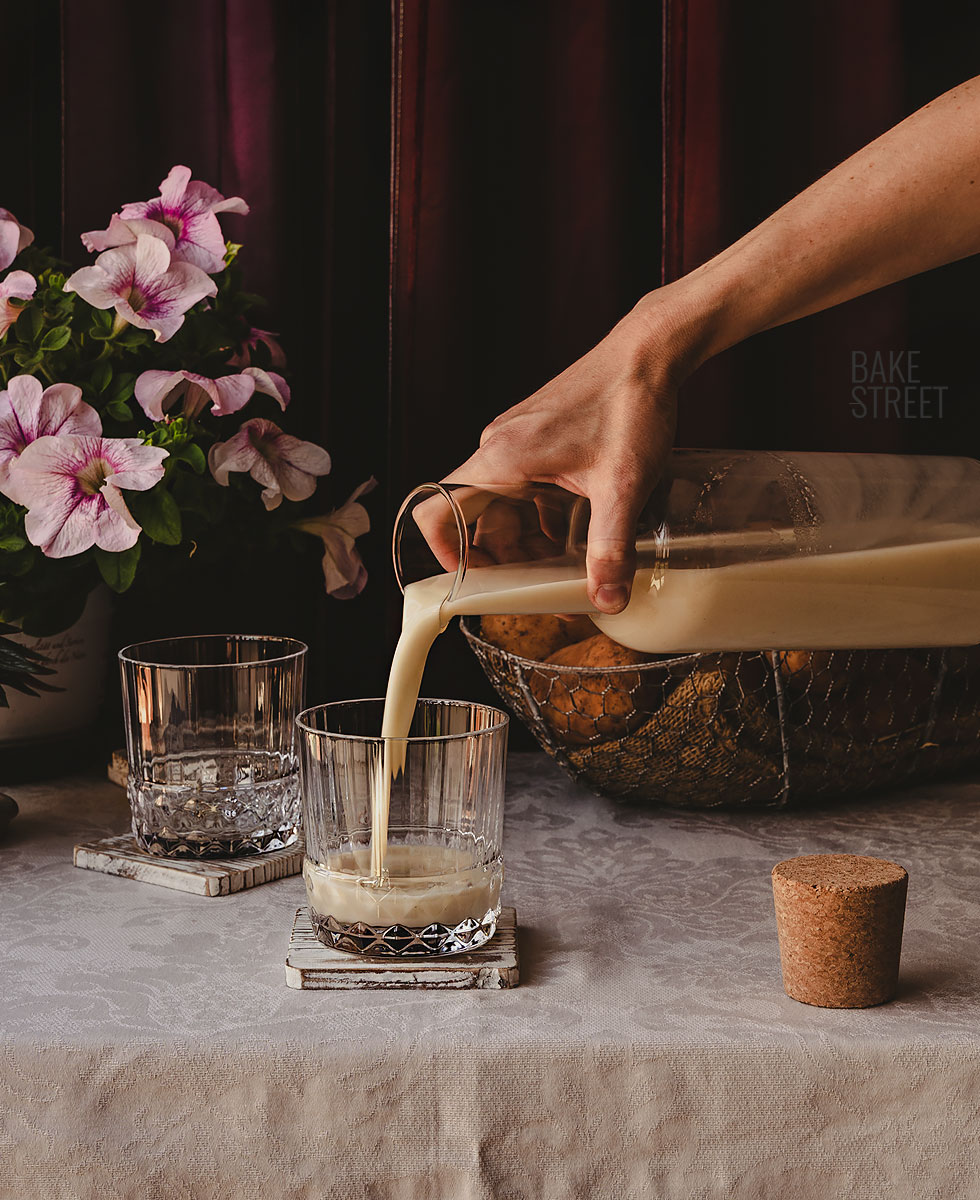
Recipe Potato Milk
Ingredients for approximately 1 liter
- 275 g potato*, peeled
- 800 g water (700 g cold water + 100 g water from cooking)
- 35 g ground almonds
- 2 Medjool dates, about 80 g
- 1 teaspoon vanilla extract, natural
- 2 g salt
* In the notes section I detail the types that we can use
Instructions
Cook potatoes.
- Wash and peel the potatoes. Cut into slices about 2 cm thick.
- Place in the WMF fast cooker, in the small 3 l. pot, and fill with water up to the 1/2 mark.
- Close the pot, turn the ring on the handle to cooking 1 and place on the heat. Once the first green ring comes out, cook for 6 minutes.
- Remove from the heat, release the steam, shake the pot gently and remove the lid.
- Remove the potatoes with a skimmer and reserve the cooking water.
- NOTE: Follow the instructions for your fast cooker or cook them in a normal pot.

Blend the potatoes.
- Place the cooked potatoes in a food processor along with half of the water.
- Bkend at high speed until a very smooth and silky consistency is achieved.
- Add the rest of the water and blend again at medium high speed for 2-3 minutes. You should get a very smooth mixture.
Add the rest of the ingredients and blend again.
- Add ground almonds along with the chopped dates, vanilla and salt.
- Blend again for 3 minutes until the ingredients are fully integrated.
- At this point we can taste the potato milk and adjust some of the elements if desired. We can even add a little more water if we consider it appropriate.
Strain the mixture through a cheesecloth.
- Place a strainer in a large bowl and place a cheesecloth over it.
- Pour the mixture over the cheesecloth. Take the ends, roll up and start pressing.

- This step will be a little laborious, we will have to do it with patience since the mixture passes through the cloth with some difficulty. From time to time, we will have to release air to help it pass better. This step will help us to remove the almond pulp and the skin of the dates.

- Transfer with a funnel in a bottle.
- Serve or refrigerate.

Notes
- Ideally, we will use Spunta, Kennebec or Russet potatoes. It can be made with other varieties, but I have tried with these three types and the result is quite good.
- It is very important that the potato is cooked and no raw parts are left. But it is also important not to overcook the potato so that it retains its properties.
- Ground almonds can be replaced by other ground nuts if desired, such as hazelnuts for example.
- If we are intolerant to nuts, we will omit this ingredient directly.
- Potato milk, on its own, is rather bland. For this reason, I added sweet and salty notes to enhance the whole. Salt is an essential element to enhance the flavors, I advise you not to omit it.

- To sweeten we can use the ingredient we want, in my case I have used dates, but we can use agave syrup, honey, maple syrup or the type of sweetener that you consider. The amount of this ingredient is entirely up to you.
- Vanilla adds a wonderful aroma to the potato milk, make sure it is natural.
- The final amount of water is according to your taste. In my case with 800 g of water, I consider that it has a good texture and consistency, but you can make it more fluid or thicker. I advise you to add the water little by little so that you can taste it and adjust the desired consistency to your taste.
- It can be kept in the refrigerator for 3-4 days.
- This variety of milk does not allow freezing, just like the potato. The consistency changes and is not pleasant.

I can't wait to know what you dare to prepare this potato milk and tell me what you think of it. While it is true that it is not what our palate can expect, if we approach it from the point of view of milk, it is a pleasant drink to consume and that will bring us many benefits to our body.
So I want to know your experiences!
Wish you a lovely day, lots of love!
Eva
Sources: The Conversation, The Conversation, Dr. Axe, Uppers
